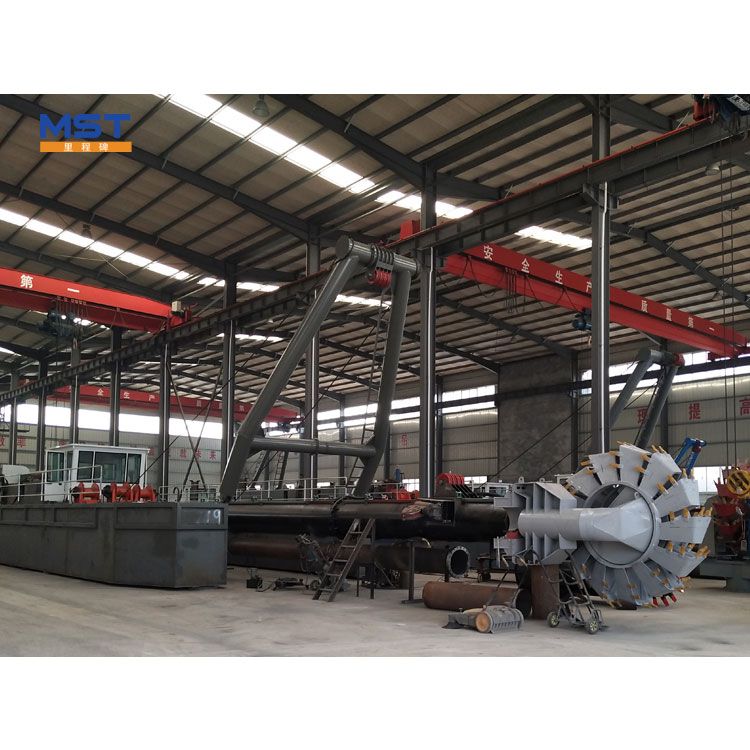Safeguarding Success: Essential Safety Precautions for Operating Trailing Suction Bucket Chain Dredgers in Gold Mining Operations
2024-03-02
Introduction:
Gold mining, with its allure of precious metals and prosperity, often conjures images of rugged landscapes and daring adventures. However, behind the scenes of this thrilling pursuit lies a paramount concern: ensuring the safety and well-being of personnel and equipment. Trailing suction bucket chain dredgers (TSBCDs) are vital assets in gold mining operations, but their operation comes with inherent risks. In this blog, we delve into the crucial safety precautions necessary for operating TSBCDs in gold mining, emphasizing the importance of prioritizing safety to safeguard success.
1. Rigorous Training and Certification:
Before operating a TSBCD, personnel must undergo comprehensive training and obtain relevant certifications. Training programs cover various aspects of dredger operation, including equipment operation, safety protocols, emergency procedures, and environmental awareness. Certification ensures that operators possess the necessary knowledge and skills to safely and efficiently operate TSBCDs in gold mining operations.
2. Pre-Operational Inspections:
Prior to each dredging operation, thorough pre-operational inspections are conducted to ensure that the TSBCD and associated equipment are in optimal working condition. Operators inspect critical components such as pumps, engines, hydraulic systems, and safety devices to identify any signs of wear, damage, or malfunction. Any issues detected during inspections are promptly addressed to prevent safety hazards during dredging operations.
3. Personal Protective Equipment (PPE):
Proper personal protective equipment (PPE) is essential for safeguarding personnel against potential hazards encountered during TSBCD operations. Operators and crew members are required to wear appropriate PPE, including hard hats, safety goggles, hearing protection, gloves, and high-visibility clothing. PPE helps mitigate the risk of injury from falling objects, abrasive materials, noise exposure, and other occupational hazards.
4. Emergency Preparedness and Response:
TSBCD operators must be prepared to respond swiftly and effectively to emergencies that may arise during dredging operations. Emergency response plans outline procedures for addressing common emergencies such as equipment failure, personnel injury, fire, or environmental incidents. Operators receive training in emergency response protocols and participate in regular drills to ensure readiness to handle unforeseen situations.
5. Safe Operating Practices:
Adherence to safe operating practices is paramount for mitigating risks associated with TSBCD operations. Operators follow established procedures for dredger maneuvering, dredging depth adjustment, bucket deployment, and material handling to minimize the risk of accidents or equipment damage. Safe operating practices also include maintaining proper communication, situational awareness, and coordination among crew members during dredging operations.
6. Environmental Protection Measures:
TSBCD operators implement environmental protection measures to minimize the impact of dredging operations on aquatic ecosystems and habitats. These measures may include sediment containment, erosion control, water quality monitoring, and habitat restoration initiatives. By implementing proactive environmental safeguards, operators mitigate environmental risks and promote sustainable mining practices.
7. Regular Maintenance and Inspections:
Routine maintenance and inspections are essential for ensuring the continued safe and reliable operation of TSBCDs. Scheduled maintenance tasks, such as lubrication, filter replacement, and equipment servicing, are performed according to manufacturer recommendations. Regular inspections of critical components help identify potential safety hazards or equipment deficiencies that require attention.
Conclusion:
Operating trailing suction bucket chain dredgers in gold mining operations requires a steadfast commitment to safety, diligence, and professionalism. By implementing rigorous training programs, conducting pre-operational inspections, wearing proper PPE, maintaining emergency preparedness, following safe operating practices, implementing environmental protection measures, and conducting regular maintenance and inspections, operators can mitigate risks and ensure the safety and success of TSBCD operations. With safety as a guiding principle, gold mining operations can thrive while protecting the well-being of personnel, preserving the environment, and upholding industry standards of excellence.



